The popularity of double ended MH lamps is on the increase. Their compact size and the availability of attractive luminaries such as the Aquaspacelight by Aqualine Buschke, the Nova by Giesmann and others adds to the aesthetic appeal of reef lighting. In this article, the seventh in the series [1-6], we present a comprehensive evaluation of most 150W double ended lamps, the ballasts available to drive these lamps, and a comparison with 175W single ended lamps.
A total of five 150W lamps available within the reef hobby were evaluated along with the five ballasts used to drive these lamps. The ballasts tested represent a selection of electronic and magnetic ballasts that are commonly available to a reef aquarist. The magnetic ballast used for these tests was a Venture ANSI-M81 ballast. The M81 ballast is recommended for the 150W Ushio 10000K double ended lamp as listed on their web page (www.ushio.com). The M81 represents the series of ballasts commonly referred to as “HQI” in the reef lighting business. Table 1 below shows the lamps and ballasts used for this study. It should be noted that while referring to ballasts as HQI may be acceptable, the only lamp that can be correctly called “HQI” is the OSRAM which features that trademark.
| 150W Lamps | 150W Ballasts |
|---|---|
| Ushio 10000K | Reliable Ballast |
| Aqualine Buschke 10000K | Aromat |
| Ice Cap 10000K | Ice Cap |
| Sylvania AquaArc 10000K | Hello Lights |
| BLV Colorlite (blue) | M81 |

Figure 1: Test setup showing suspended lamp, power meter and spectroradiometer housed within a black room
Test Setup
In an effort to test the double ended lamps in a manner similar to our tests of the mogul based lamps and to allow one to compare their values to those of mogul based lamps, we used a bracket that enabled us to suspend the bulb in space interfering minimally with the light emitted from the lamp. The bracket was painted black to eliminate reflection. Picture 1 below shows the setup as used during testing. The option of testing in a commercial fixture with a black painted reflector (similar to the manner in [7]) was considered, but not used since the method used here is more in line with how the single ended lamps were tested in our prior tests. The same Licor Spectroradiometer used in our prior tests was used, again with the sensor at eighteen inches below the central axis of the lamp. With double ended metal halide lamps, the lamp orientation is limited to two directions. All lamps were tested with the nipple orientation as close to up as was possible given the limitations of double ended lamps. Spectral data was collected for the bare lamps as well for a shielded situation, because almost all applications recommend using these lamps within a glass shielded fixture. A glass shield taken from the PFO fixture was used. This shield is 1/8” thick tempered, low-e glass (Dave at PFO, pers. comm.) The glass shield was placed on top of the spectroradiometer to eliminate any stray unshielded light from reaching the sensor. This allowed us to determine the impact of the glass shield on light output. For each ballast and lamp combination, in shielded and unshielded state, spectral data was collected amounting to a total of fifty combinations evaluated (5x5x2 = 50). Additionally, for each ballast and lamp combination the power consumption, input voltage and current were also recorded using a Victor True RMS power meter. The power value is what a user pays for when running the ballast and lamp combination.
The data collected is presented as follows: The spectral data and light output for each of the lamps is first compared using a common ballast. This allows for direct comparison of the spectral differences between each lamp. The next section presents the data for each lamp when used with different ballasts. Efficiency is then presented on a lamp and ballast basis and finally, a comparison of the 150W DE lamps with 175W single ended lamps is presented.
Spectral Output Of The Lamps (single Ballast)
Since the ANSI-M81 is the recommended ballast for 150W double ended lamps, we decided to compare the lamps using this ballast to establish a baseline of performance.
The figure below shows the spectral output of the five different lamps when operated by the same ballast.
From the plot in figure 2, the spectral difference between the lamps can be clearly distinguished. The Aqualine Buschke (AB), Ushio and Icecap lamps have very similar spectral distributions with primary differences being in the peak values achieved, which translate into differences in the color temperature, and PPFD (PAR) values as shown in Table 2 below. The Sylvania Aqua Arc is an interesting lamp, with a very different spectral peak as compared to the other 10000K lamps. The BLV Colorlite Blue lamp, as expected, has a single pronounced peak at 454 nm, very similar to the 20000K lamps sold in the hobby. Figure 3 shows the light distribution grouped into various color ranges.
| Lamp | Power | Voltage | Current | PPFD | CCT |
|---|---|---|---|---|---|
| Ushio 10000K | 202 | 119.7 | 1.83 | 72.1 | 6462.8 |
| AB 10000K | 191 | 120.3 | 1.74 | 63.9 | 122229.3 |
| IceCap 10000K | 212 | 120.9 | 1.89 | 77.2 | 9117.1 |
| Sylvania Aqua Arc | 196 | 121.6 | 1.77 | 77.7 | 7844.8 |
| BLV Colorlite | 202 | 121 | 1.82 | 35.7 | Out of range |
As far as PPFD is concerned, the Sylvania and IceCap lamps have the highest output, with the IceCap lamp coming closest to its claimed 10000K specification. It is interesting to note that the Sylvania Aqua Arc lamp, in spite of having lower output in the blue range, still has a higher CCT than the Ushio lamp. This makes it even more important to know the spectral output along with the PPFD and CCT values because color temperature alone is not a precise indication of where the peak values occur. The AB lamp, as seen from the spectral plot, has higher peaks in the blue/violet region, and hence has a much higher CCT. Personal conversations with Brad Shaw formerly of Aqua Medic had indicated that the AB lamp is in fact a 13000K lamp, and as seen from the test result this lamp did come close to the claimed color temperature (this result can also be seen in the data from the other ballasts). Both the IceCap and AB lamps are excellent choices for an aquarist looking for a crisp white/blue coloration.
The differing UV output of the lamps (310-400nm) is also quite interesting. As seen from the graph in figure 3, the AB lamp has a considerably higher UV output as compared to the other lamps, almost 60% more than the Sylvania lamp and more than double that of the Ushio and Icecap lamp.
To determine the impact of using a glass UV shield with double ended lamps, the lamps were tested with a shield placed over the sensor as was previously explained. The figures 4 and 5 show the impact of the UV shield on the lamps’ spectral output, using the AB lamp as an example
The use of the shield resulted in a drop in the PPFD to 50.63 (a 20% reduction). This 20% reduction in output is pretty consistent across all lamps. Since these are intended to be UV-specific shields, as seen from the data, there is a 47% drop in the output in the UV range, and about 27% drop in the 400-440 nm range. Interestingly, the UV shield used on an AB lamp brings the UV output of the lamp to a range very similar to the UV output of other lamps without a UV shield. The question that still needs to be adequately answered is what level of UV emissions is harmful to corals and other reef tank inhabitants. Also, we did not measure any UV emissions in the UV-B and UV-C range, given the limitations of the spectroradiometer being used.
Comparison Of Lamps Under Different Ballasts
In this section we present the results of testing the different lamps using different ballasts. For each lamp tested, five ballasts were used to fire the lamp and data is presented for the unshielded and shielded case. Spectral data is only provided for the shielded case, since we feel that most lamps will be used in this manner.
Ushio 10000K
The Ushio 10000K lamp is a popular lamp in all wattages. It is commonly available to reef hobbyists and relatively inexpensive compared to others. When this lamp is burned next to an AB or IceCap lamp, to our eye it appeared different in color and the color temperatures that were found for this lamp support that observation.
| Ballast | Power | Voltage | Current | PAR | CCT |
|---|---|---|---|---|---|
| Reliable | 168 | 120.5 | 1.52 | 64.1 | 6487.7 |
| Aromat | 164 | 120 | 1.48 | 62.6 | 6526.6 |
| M81 | 202 | 119.7 | 1.83 | 72.1 | 6462.8 |
| IceCap | 168 | 120.2 | 1.49 | 63.3 | 6462.9 |
| Hello Lights | 179 | 119.7 | 1.74 | 75.5 | 5994.2 |
| Ballast | Power | Voltage | Current | PAR | CCT |
|---|---|---|---|---|---|
| Reliable | 166 | 120 | 1.52 | 52.1 | 6057.1 |
| Aromat | 164 | 120.3 | 1.48 | 51.2 | 6103.2 |
| M81 | 203 | 120 | 1.84 | 59.3 | 6044.2 |
| IceCap | 168 | 120.3 | 1.5 | 52.3 | 6028.9 |
| Hello Lights | 178 | 119.8 | 1.73 | 61.2 | 5679.2 |
Tables 3 and 4 show the test results for the USHIO 10000K lamp with different ballasts. As seen from the results there is very little difference between the three electronic ballasts (IceCap, Reliable and Aromat) with respect to power use, PPFD and CCT. The ANSI-M81 is the recommended ballast for this lamp according to USHIO (www.ushio.com) and it does generate more light output from the lamp, however the power consumption is much higher. The Hello Lights ballast used 2% less wattage but provided 3% more PAR for the shielded results and the color temperature dropped some 6%. However, this lamp flickered considerably with the Hello Lights ballast. Hello Lights claims this ballast to be usable for 150W and 175W double and single ended lamps however the ballast itself only indicates compliance with 175W lamps. Additionally, there is no switch on the ballast to designate to the ballast which lamp wattage is being driven. This may be the reason for the flicker in the light output.
AB 10000K
This lamp, manufactured by Aqualine Bushke and sold in the US through Aqua Medic, is another very popular lamp in the hobby. Again we can see that there is very little variation between the electronic ballasts driving the lamp as far as PFFD values are concerned. Interestingly enough, the lamp had CCT values close to 13000K in the unshielded state. The Hello Lights ballast had the highest PPFD output as compared to the other ballasts and there was no flicker with this lamp when powered by the Hello Lights ballast.
| Ballast | Power | Voltage | Current | PAR | CCT |
|---|---|---|---|---|---|
| Reliable | 168 | 119.9 | 1.53 | 66.1 | 13033.8 |
| Aromat | 163 | 120.4 | 1.47 | 64.2 | 13155.2 |
| M81 | 191 | 120.3 | 1.74 | 63.9 | 12229.3 |
| IceCap | 172 | 119.7 | 1.54 | 66.9 | 12479.3 |
| Hello Lights | 175 | 119.8 | 1.72 | 79 | 12871.2 |
| Ballast | Power | Voltage | Current | PAR | CCT |
|---|---|---|---|---|---|
| Reliable | 168 | 119.7 | 1.54 | 53.2 | 10762.2 |
| Aromat | 163 | 120.7 | 1.47 | 51.8 | 10826.8 |
| M81 | 191 | 120.3 | 1.74 | 50.8 | 10209.3 |
| IceCap | 172 | 119.8 | 1.53 | 54.2 | 10756 |
| Hello Lights | 177 | 120.2 | 1.72 | 64.3 | 10811.5 |
The tremendous peak at 420 nm is clearly obvious as is the smaller secondary peak at 546 nm.
IceCap 10000K
This brand new lamp is being manufactured in Germany and sold by IceCap in the US. It is a promising new lamp, with excellent PPFD values and CCT close to 10000K. Here again, the three electronic ballasts are comparable in light output. The M81 ballast generates the highest output, but once again has higher power consumption.
| Ballast | Power | Voltage | Current | PAR | CCT |
|---|---|---|---|---|---|
| Reliable | 167 | 119.8 | 1.51 | 61.8 | 9195.9 |
| Aromat | 164 | 121.2 | 1.47 | 59.8 | 8902.4 |
| M81 | 212 | 120.9 | 1.89 | 77.2 | 9117.1 |
| IceCap | 168 | 120.3 | 1.51 | 61.1 | 8996.7 |
| Hello Lights | 178 | 119.9 | 1.71 | 72.4 | 8595.3 |
| Ballast | Power | Voltage | Current | PAR | CCT |
|---|---|---|---|---|---|
| Reliable | 166 | 119.8 | 1.52 | 50.3 | 8270.5 |
| Aromat | 164 | 121 | 1.48 | 48.5 | 7844.6 |
| M81 | 212 | 121 | 1.89 | 63.6 | 8190.9 |
| IceCap | 168 | 120.4 | 1.51 | 49.9 | 8074.1 |
| Hello Lights | 178 | 120 | 1.71 | 57.6 | 8042.6 |
The similarities between this lamp and the AB lamp are numerous. The largest difference is in the higher peak at 546 nm and lower peak at 420 nm, which accounts for the higher PPFD and lower CCT values as compared to the AB lamp. The IceCap lamp flickered considerably with the Hello Lights ballast. Overall this is an excellent lamp.
Sylvania AquaArc 10000K
This lamp was actually acquired from Australia and to the best of our knowledge is not currently distributed within the US. The lamp is listed on the Sylvania web site (http://www.aquanet.de/sylvania/English/dframset.htm). Once again there is very little difference between the electronic ballasts, except for the Hello Lights ballasts which generated the most output. Similarly to previous lamps, there was considerable flicker while operating on this ballast.
| Ballast | Power | Voltage | Current | PAR | CCT |
|---|---|---|---|---|---|
| Reliable | 168 | 120.4 | 1.53 | 74.8 | 8380.4 |
| Aromat | 163 | 120 | 1.48 | 72.4 | 8427.1 |
| M81 | 196 | 121.6 | 1.77 | 77.7 | 7844.8 |
| IceCap | 172 | 119.9 | 1.53 | 75.7 | 8338.4 |
| Hello Lights | 178 | 120.9 | 1.68 | 95.1 | 8153.3 |
| Ballast | Power | Voltage | Current | PAR | CCT |
|---|---|---|---|---|---|
| Reliable | 168 | 120.2 | 1.53 | 61.2 | 7854.3 |
| Aromat | 163 | 119.9 | 1.48 | 59.5 | 7884.2 |
| M81 | 196 | 121.3 | 1.77 | 64.3 | 7431.3 |
| IceCap | 168 | 120.2 | 1.51 | 62.9 | 7846 |
| Hello Lights | 178 | 120.8 | 1.7 | 78.8 | 7727.1 |
This lamp’s sole peak occurs at 536 nm which is unique from any other lamp tested. This lamp does have a high color temperature despite its lack of significant peaks in the blue or violet spectrum. Although the Hello Lights ballast achieved the highest PAR values, this lamp flickered considerably while operating on it. One of the authors (TM) is now using this lamp above a twelve gallon reef aquarium as the sole means of lighting. The color appears a crisp white with little green or blue coloration whatsoever and is very pleasing to the eye.
BLV Colorlite (blue)
The BLV Colorlite (blue) is a lamp that has caught aquarist’s eyes just recently. It is a similar lamp to the mogul based Radium in its spectrum but comes in a double ended format.
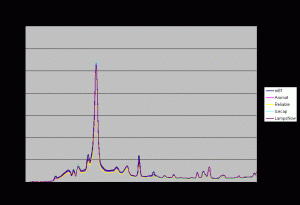
Figure 10: Spectral Plot of the Shielded BLV Colorlite (Blue) Lamp As is plainly obvious, this lamp provides light from primarily the blue end of the spectrum. The peak occurs at 454 nm.
| Ballast | Power | Voltage | Current | PAR | CCT |
|---|---|---|---|---|---|
| Reliable | 168 | 119.5 | 1.54 | 30.3 | RANGE |
| Aromat | 164 | 121 | 1.48 | 31.8 | RANGE |
| M81 | 202 | 121 | 1.82 | 35.7 | RANGE |
| IceCap | 172 | 119.8 | 1.52 | 32.2 | RANGE |
| Hello Lights | 175 | 120.5 | 1.7 | 34.1 | RANGE |
| Ballast | Power | Voltage | Current | PAR | CCT |
|---|---|---|---|---|---|
| Reliable | 168 | 119.7 | 1.54 | 25.4 | RANGE |
| Aromat | 164 | 120.9 | 1.47 | 24.8 | RANGE |
| M81 | 201 | 121 | 1.82 | 28.9 | RANGE |
| IceCap | 172 | 120 | 1.53 | 27.2 | RANGE |
| Hello Lights | 175 | 120.1 | 1.69 | 27.4 | RANGE |
Efficiency Of 150w Lamps
One differentiating measurement of a lamp’s performance is the efficiency. This measure is the amount of PPFD put out divided by the power consumed. This measurement allows us to compare lamps of different wattage and allows a hobbyist to select a bulb that will provide the most light per dollar spent on electricity (reference to first of your articles). As electricity is becoming more expensive in some areas, this measure is a valuable tool in selecting a lighting setup. Below is the efficiency data for all lamps and ballasts. This data is presented for the shielded situations only, as that is how a lamp would most often be utilized over a reef tank.
| Ushio | AB | IceCap | ColorLite | Sylvania | Average: | |
|---|---|---|---|---|---|---|
| Reliable | 0.31 | 0.32 | 0.30 | 0.15 | 0.36 | 0.29 |
| Aromat | 0.31 | 0.32 | 0.30 | 0.15 | 0.37 | 0.29 |
| M81 | 0.29 | 0.27 | 0.30 | 0.14 | 0.33 | 0.27 |
| IceCap | 0.31 | 0.32 | 0.30 | 0.16 | 0.37 | 0.29 |
| Hello Lights | 0.34 | 0.36 | 0.32 | 0.16 | 0.44 | 0.33 |
| Average: | 0.31 | 0.32 | 0.30 | 0.15 | 0.37 |
As can be seen from the data, the Sylvania is the most efficient lamp by roughly 15%, followed by the Ushio, AB, IceCap and lastly, the Colorlite. In terms of ballast efficiency, note that the magnetic ballast was the poorest performer and that almost all electronic ballasts performed identically with the exception of the Hello Lights ballast which was very efficient but caused flickering on many of the lamps tested.
Comparison With 175w Single Ended Lamps
A question that hobbyist often encounter is should I go with 150W double ended lamp versus the 175W double ended lamp. A comparison of two such lamps (AB 150W DE and AB 175W SE) is shown in the table and figure below. As seen from the data, there is very little difference in the light output of the two lamps when both are run using the manufacturer’s suggested magnetic ballast. (Note: The 175W lamp used here for comparison is the better of the two AB 175W lamps we tested in our previous article (http://www.advancedaquarist.com/issues/oct2002/feature.htm).
| Lamp & Ballast | Power | Voltage | Current | PAR | CCT |
|---|---|---|---|---|---|
| 175W SE- Mag. Ballast (M57) | 213 | 120.3 | 1.92 | 64.4 | 11687 |
| 150W DE- Mag. Ballast (M81) | 191 | 120.3 | 1.74 | 63.9 | 12229 |
Another interesting observation is the fact that there is very little difference in the UV-A range for the two lamps 150W without a shield and the 175W. The fact that the UV-A flux from similar single- and double-ended lamps is similar does not in any way imply that it is safe to run double-ended (single envelope) lamps without UV shielding. The borosilicate glass used as the envelope for single ended lamps is a good UV-B and UV-C absorber. Both UV-B and UV-C are known to be responsible for a wide range of potentially damaging human and animal health effects, primarily related to the skin, eyes, and immune system. Until we know more about the UV-B and UV-C output of the lamps we do not recommend operating the 150W lamp without a UV glass shield.
Conclusion
The 150W double ended lamps are very attractive choice for lighting, and in fact we feel they are a better choice when compared to the 175W single ended lamps – based on the fact they produce as much light as the 175W lamps and consume less electricity. Also, the smaller size of the lamp makes it more effective in a reflective fixture. The electronic ballasts for the 150W lamps are also attractive because of the size, weight and heat issues, but they seem to slightly under drive the lamps as compared to the magnetic ballast. Also, it is quite clear that there is very little difference in the light output for the 3 electronic ballasts, the IceCap, Reliable and Aromat ballast. The Hellolight’s ballast is not likely a true 150W ballast, since it is rated for 175W also. These results are for new lamps and based on a sample size of one. Eventually we would like to develop an understanding of how these double ended bulbs age with different ballast combinations.
Acknowledgements
We would like to thank several people whose help made this study possible. They were kind enough to provide us with lamps and ballasts for testing: Dave and Patrick at PFO Lighting, Brain at HelloLights.com, Brad at Aqua-Medic, Andy at IceCap Inc. Finally, we would like to thank Dr. Paul Walker of Penn State University for the use of the spectroradiometer and dark room for testing the lamps.
References
- Joshi, S. 1998. Spectral Analysis of Metal Halide Lamps Used in the Reef Aquarium Hobby Part 1: New 400-watt Lamps, http://www.animalnetwork.com/fish2/aqfm/1998/nov/features/1/default.asp
- Joshi, S. and Morgan D. 1999. Spectral Analysis of Metal Halide Lamps Used in the Reef Aquarium Hobby Part II: Used 400-watt Lamps http://www.animalnetwork.com/fish2/aqfm/1999/jan/features/2/default.asp
- Joshi, S. and Morgan, D. 1999. Spectral Analysis of Metal Halide Lamps Used in the Reef Aquarium Hobby Part III: New and used 250-watt Lamps http://www.animalnetwork.com/fish2/aqfm/1999/dec/features/2/default.asp
- Joshi, S. and Morgan D., “Spectral Analysis of Metal Halide Lamps – Do Ballasts Make a Difference,” 2001 Annual Marine Fish and Reef USA, Fancy Publications.
- Joshi, S., “Spectral Analysis of Recent Metal Halide Lamps: Part IV– 10000K and 12000K lamps,” 2002 Annual Marine Fish and Reef USA, Fancy Publications.
- Joshi, S. and Marks, Timothy. 2002. Spectral Analysis of Recent Metal Halide Lamps and Ballasts: Part VI, http://www.advancedaquarist.com/2002/10/aafeature
- Harker, R. 2002 “Product Review – 150W Aqualine 150W Bulb and Fixture”, http://www.advancedaquarist.com/2002/8/review

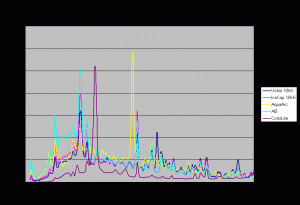
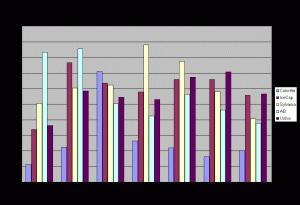
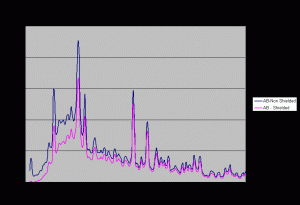
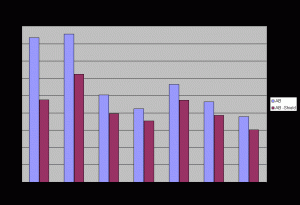
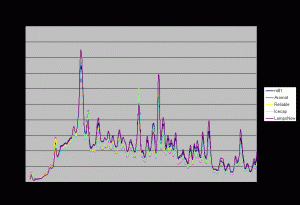

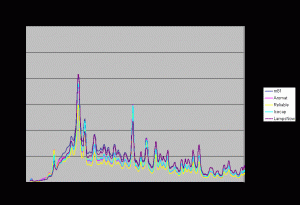
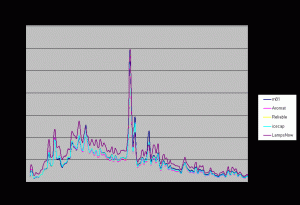
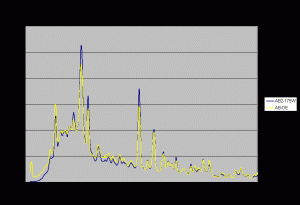

0 Comments